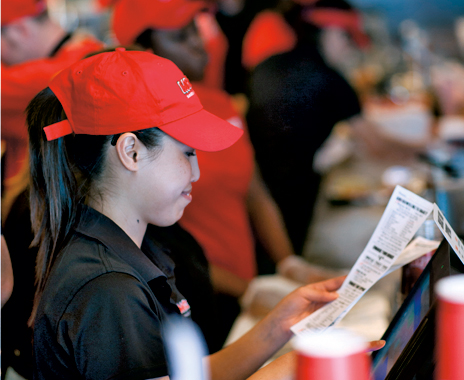A recent study by the Restaurant Opportunities Centers United (ROC) highlighted a troubling trend of sexual harassment in the restaurant industry: 60 percent of female and transgender workers and 46 percent of male workers report harassment as an uncomfortable aspect of work life. These findings follow an MSNBC review of 2011 data from the Equal Employment Opportunity Commission (EEOC), which found that restaurants accounted for 37 percent of all claims.
Although the new ROC study focuses on establishments employing tipped workers, the findings have broader implications for the foodservice sector, including quick-service restaurants.
“What we were trying to understand overall was the problem of sexual harassment, because we know that most of the claims to the EEOC come from the restaurant industry,” says Teo Reyes, the national research director for ROC.
According to the report, tipped workers are in an especially precarious position because their wages are tied to customer interaction. But quick-serve employees are still subjected to inappropriate behavior, from patrons and coworkers alike.
Harassment is not limited to sexual misconduct. Other sources include verbal abuse, racial discrimination, and bullying. Harassment in the workplace can range from face-to-face, one-on-one harassment to social media harassment, says Michael Mabry, chief operating officer of Dallas-based Mooyah Burgers, Fries & Shakes, which requires every team member to sign a social media harassment policy in addition to a sexual harassment policy.
In some instances, customers are the perpetrators of these behaviors, but the ROC finds that harassment is most likely to come from a coworker.
“We continue to see very egregious cases of racial harassment,” says Justine Lisser, spokeswoman for the EEOC. She adds that these incidences can range from racial slurs to offensive posters displayed in the workplace.
Age can also play a role when it comes to manager-subordinate harassment. Lisser says that she has seen problems arise in quick-serve establishments where teenage employees report to managers who are only a few years older and often poorly versed in proper professional etiquette. However, she’s quick to note that harassment is not limited to a single demographic.
“We’ve had harassments with all ages of people, and we’ve also had same-sex harassment,” Lisser says. “By no means is this man-versus-woman. It can be man-versus-man, woman-versus-man.”
The root of harassment in the restaurant industry lies partially in the fact that it can spread so easily in that environment. ROC’s Reyes says that when a worker sees that type of interaction being accepted, it “green lights” that type of behavior. He adds that “kitchen talk,” or casual sexual talk, is quite common in restaurants and contributes to an uncomfortable work atmosphere.
“In my experience, I would say that it’s probably more inappropriate comments and joking that crosses the line,” says Glenna Hecht, president and founder of the human resources outsource agency Humanistic Consulting, which has worked with brands like Mooyah. “When a business is a little gray, that’s when the boundaries get pushed, because people aren’t sure.”
Given how prevalent harassment can be in the service industries, operators can benefit from taking steps to prevent it. Hecht recommends having clearly defined policies in place that eliminate any doubt as to which behaviors are acceptable and which ones are not. More importantly, operators and supervisors must maintain and follow the rules they put forward.
“It is useless to have a policy if it is not enforced,” Lisser says. “You can have the best thing on paper … but if somebody actually files a complaint and nothing happens, that’s not an effective policy.”
Lisser also advises companies to provide their employees with multiple avenues through which they can report a complaint. Some options include hiring a human resources consultancy firm, which Mooyah did, or installing a corporate hotline.
Since the ROC report found that women were more likely to be targets of harassment, Reyes recommends that operators identify a female supervisor or high-ranking employee whom other female employees would feel comfortable approaching. “It would have to be someone in the store who had seniority, that was respected by management and the workers,” Reyes says.
Hecht also believes that the solution must start at the highest level. The onus is on brand leaders to determine and implement proper conduct.
“The reason it’s a leadership decision is because it might go back up the food chain,” Hecht says. “We need to be very clear and careful how we want to behave in the workplace.”
She recommends training managers on what to look for on the floor, how to respond in different situations, and how to read body language. For example, supervisors should notice if an employee shrinks to the back of the group during a particular conversation that he or she might find offensive.
The end of harassment means a comfortable work environment without the fear of unwanted advances, discrimination, bullying, or other forms of harassment.
“First and foremost are our people,” Mooyah’s Mabry says. “The whole idea is that we want to make sure our people feel protected and safe when they come to work.”












